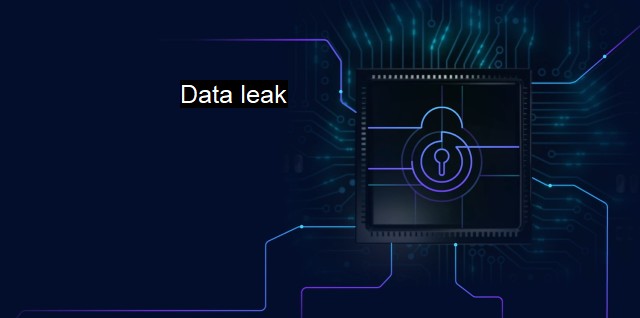What is Data leak?
Data Leak Prevention: Importance, Causes and Cybersecurity Measures for Individuals and Corporations
A data leak refers to a security event in which protected, sensitive, or confidential data is released to an untrusted environment, either intentionally or unintentionally. It's a specific kind of incident that bears serious consequences in today's highly digitized world. In an era where data has become the new currency, sensitive information like credit card data, personal identification information, health records, banking information, and even sensitive organizational data are targets for cybercriminals, making data leaks a considerable concern in cybersecurity.Data leaks should not be confused with data breaches, though both refer to security incidents involving data loss. The distinction lies in intent; a breach typically designates a deliberate attempt by malicious actors to gain unauthorized access to data, while a leak can involve unintentional actions by trusted individuals.
Data leaks can often happen as a result of human error, insider threats, or technical vulnerabilities. Instances of human error could include leaving confidential files on a desk in plain sight or sending sensitive emails to wrong recipients. Insider threats incorporate malicious actions by disgruntled employees or business partners who intentionally leak sensitive data as retaliation or for financial gain.
Technical vulnerabilities might encompass issues like weak, reused, or compromised passwords, security bugs in software, or unsecured network connections. Phishing techniques, sim swapping, and malware activity can also lead to data leakage when attackers trick users into giving up login credentials or download malicious software that harvests input data.
Stopping data leaks is a complex endeavor. It involves a comprehensive security strategy that includes preventive, detective and corrective controls. Preventive controls are used to harden the body of the system against potential leaks. Measures such as encryption, strong password policies, regular software updates, and system patches make it challenging for malicious actors to access the data.
Detective controls include measures to monitor network health and system activities. Intrusion detection systems, antivirus software, and firewall monitoring allow organizations to monitor reliable vulnerabilities and identify alien activities early, thus intercept attempts of data leakages.
Corrective controls happen post data leak. In these instances, backed-up data replaces the lost data minimizing the loss. An organization may use compensatory controls to counter the effects of the data leak, as well.
Indeed one significant element in protecting against data leak remains in being proactive. Regularly updating antivirus and anti-malware software should be a practice. Antivirus software provides substantial protection against most types of malware, which can prevent unauthorized access to the system and data. Antivirus can detect malicious software based on signature updates, heuristics, and behavioral analysis, which may include various strains of spyware or ransomware likely to cause data leaks. User awareness is also critical, and proper education about spotting phishing attempts, utilizing strong and unique passwords, and recognizing social engineering attacks is invaluable.
In the last decade, data leaks significantly tarnish the reputation of several high-profile companies, revealing the importance of good cybersecurity practices. Major companies such as Yahoo, Marriott, and Equifax were hit hard by data leaks, resulting in lost customers, plummeting stock prices, massive fines, and disfigured reputations. It serves as a stark reminder that no organization or individual is impervious to data leaks.
Data leaks represent one of the most severe and most common threats in our interconnected digital age. Organizations and individuals must understand what a data leak is and how it can occur from both outside and inside to leverage the best antivirus and security practices preventing them effectively.

Data leak FAQs
What is a data leak?
A data leak is a security breach in which sensitive information is disclosed or made accessible to unauthorized individuals or entities. This can be due to a variety of factors, including human error, malware, or hacking.What are the consequences of a data leak?
The consequences of a data leak can be severe and far-reaching, including financial losses, reputational damage, and legal ramifications. Sensitive information such as customer data, financial information, and intellectual property can be compromised, leading to a loss of trust from customers and stakeholders.How can I prevent a data leak?
There are several steps you can take to prevent a data leak, including implementing strong passwords, keeping software up to date, using encryption, and providing employee training on cybersecurity best practices. It is also important to have an antivirus software that can detect and prevent cyber threats.What should I do if I suspect a data leak?
If you suspect a data leak, you should immediately take steps to contain and mitigate the breach. This may involve isolating affected systems, changing passwords, and notifying relevant parties such as customers or regulatory bodies. It is important to have an incident response plan in place and to work with cybersecurity professionals to investigate and resolve the issue.| | A | | | B | | | C | | | D | | | E | | | F | | | G | | | H | | | I | | | J | | | K | | | L | | | M | |
| | N | | | O | | | P | | | Q | | | R | | | S | | | T | | | U | | | V | | | W | | | X | | | Y | | | Z | |
| | 1 | | | 2 | | | 3 | | | 4 | | | 7 | | | 8 | | |||||||